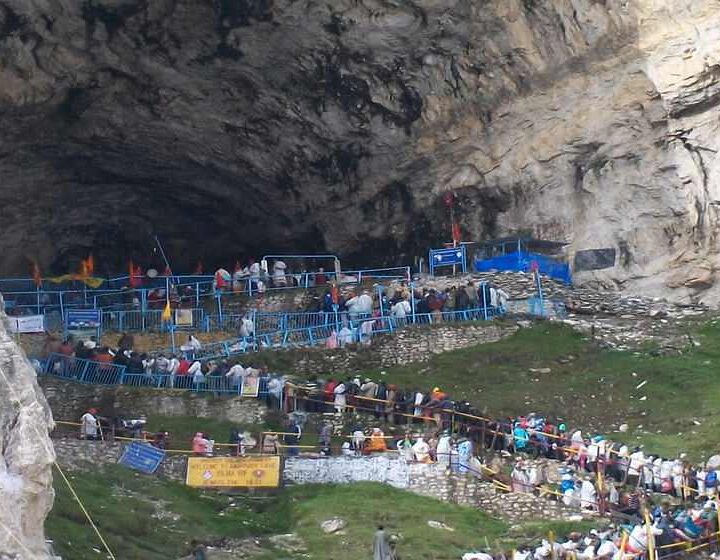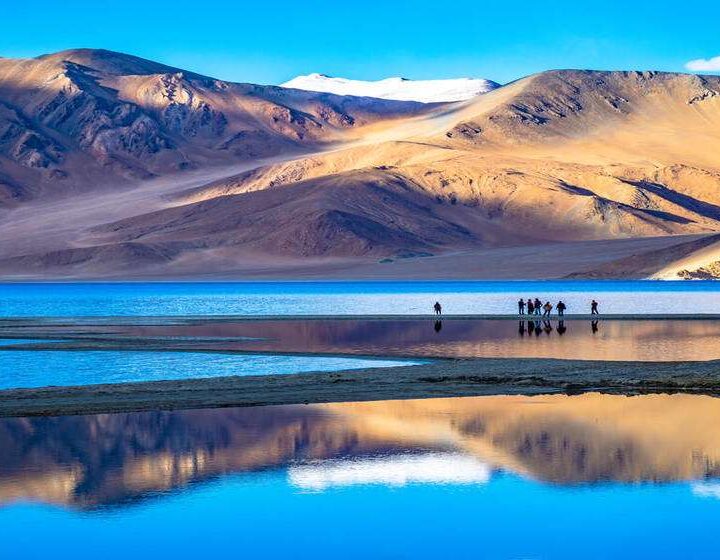Tour overview
The Chardham Yatra is a sacred pilgrimage to four important shrines in Uttarakhand: Yamunotri, Gangotri, Kedarnath, and Badrinath. The journey begins in Delhi and typically includes road driving and hiking with stunning views of the Himalayas. Pilgrims typically visit Haridwar first, where they can take part in the Ganges Aarti. Each shrine holds deep spiritual significance and attracts devotees seeking divine blessings. Yamunotri is dedicated to the Yamuna River, while Gangotri is dedicated to the Ganges. Kedarnath is known for its ancient Shiva temple, and Badrinath is dedicated to Lord Vishnu. The Yatra is typically held between late April and November, making it a popular spiritual adventure. Not only does the trip offer an opportunity for reflection and devotion, but it also allows travelers to connect with the natural beauty of the area.
Things to note for Char Dham Yatra – Travel Tips
Season: Deepavali from May to October every year – Region: Garhwal, Uttarakhand – Altitude: 3585 m
Things to bring: Woolen hat, umbrella, walking stick, tennis shoes, raincoat, two pairs of socks, flashlight, moisturizer.
These places are very cold, so people should bring warm clothes.
Q: What is Chardham Yatra?
Ans: Chardham Yatra is a pilgrimage to four revered holy sites in Uttarakhand: Yamunotri, Gangotri, Kedarnath and Badrinath. It holds great spiritual significance for Hindus.
Q: When is the best time to do Chardham Yatra?
Ans: The ideal time for Chardham Yatra is from late April to early November, as the temples are open and the weather is relatively pleasant during this time.
Q: How to reach the starting point of the pilgrimage?
Ans: Most pilgrims depart from Delhi and travel to Haridwar by car or train. There are several modes of transport to reach the various shrines from Haridwar.
Q: What is the distance between the shrines?
Ans: The distances between the shrines vary: Haridwar to Yamunotri: about 210 km Yamunotri to Gangotri: about 250 km Gangotri to Kedarnath: about 350 km Kedarnath to Badrinath: about 230 km 5. Is trekking a part of the pilgrimage?
Q: Does the Yatra involve trekking?
Ans: Yes, some shrines like Yamunotri and Kedarnath require trekking. The trek to Yamunotri is about 6 km, while the trek to Kedarnath is about 16 km.
Q: What are the accommodations like?
Ans: Accommodation ranges from budget guesthouses to mid-range hotels in towns near the shrines. Booking in advance is recommended during peak season.
Q: Are there any health issues?
Ans: Travelers should be prepared for high altitudes, especially in Kedarnath and Badrinath. It is important to acclimatize properly and drink enough water. Consult a doctor before traveling, especially if you have a pre-existing medical condition.
Q: What should I bring with me on the Yatra?
Ans: Essentials include warm clothing, trekking shoes, raincoat, first aid kit, water bottle, and personal belongings. Don’t forget your spiritual belongings like rosary beads or a small idol if needed.
Q: Are there any specific rituals to follow?
Ans: Pilgrims usually perform rituals and prayers at each shrine. It is common to take a holy bath in the river and attend aarti (light ceremony) at the temple.
Q: Can I do the Yatra solo or do I need a guide?
Ans: You can do the pilgrimage on your own, but hiring a local guide or joining a tour group can enhance the experience, especially for first-time travelers, as they can provide valuable insights and assistance.
Included
- 10 night’s accommodation in hotel as mentioned in the itinerary.
- Daily Breakfast and Dinner in hotel.
- Transportation from Delhi to Delhi as mentioned in the itinerary.
- Entry fees wherever applicable in the itinerary.
Not Included
- Any Insurance or Medical facilities.
- Any rescue or evacuation cost during Natural Calamity or Force Major.
- Any meals, item not specified above.
- Any item of personal nature like: Mineral water during trekking/tour, camera/video camera fee, laundry, telephone/fax calls, drinks etc.
- Any pone or potter charges.
- 5% current applicable taxes.
Day 1: Delhi – Haridwar – Rishikesh (210 Kms)
Leave for Haridwar early in the morning, halt for lunch and restart the journey. Evening are reserved for the spiritual and splendid Aarti at Har ki Pauri Ganga after check in. Night spend at hotel.
Day 2: Haridwar – Barkot (230 Kms)
Leave Haridwar early in the morning, lunch on the way to Mussoorie. After visiting Kempty falls on the way, Barkot will be reached after 8 hours’ drive. Check in at Camp on Yamunotri road. Night will be spent at the camp.
Day 3: Barkot – Yamunotri – Barkot (32 Km drive and 10 Km trek)
Leave for Hanuman Chatti early in the morning, it is a 32 Km drive from Barkot. We will take a local jeep for Phool Chatti to shorten the distance by 5 km. After arriving at Yamunotri Temple, we will pray and take holy dip before commencing our Char Dham Yatra. Will leave for camp in the evening and have Ayurvedic Massage for relaxation of body and mind. Night will be spent at Camp.
Day 4: Barkot – Uttarkashi (62 Kms)
After having breakfast at the camp will leave for Uttarkashi. Lunch at Uttarkashi and check in at Camp . Evening reserved for Vishwanath Temple. After Dinner, night will be spent atcamp.
Day 5: Uttarkashi – Gangotri – Uttarkashi (105 Km one side)
After having Breakfast at the camp will leave for Gangotri. On arrival will take a holy dip in to the sacred river Ganga, perform prayers and relax in the bright sun shine. Will return back camp in the afternoon and evening is reserved for Ganga Aarti. Night will be spent at the camp.
Day 6: Uttarkashi – Guptakashi (260 Kms)
Leave for Guptakashi early in the morning after breakfast at the camp.Guptakashi is located on the banks of river Mandakini. Check in at Camp which is located 2 kms towards Gaurikund. After Dinner, the night will be spent at the camp.
Day 7: Guptakashi – Kedarnath – Guptakashi (By Helicopter)
Morning drive to Rudrapur Guptkashi Helipad , to take a helicopter for Kedarnath Ji, which is at a Height of 3500 mts .As it’s a high altitude, Tour members should carry personal medicines, woolen clothes for Kedarnath. On arrival visit Kedarnath Temple Pooja & Kedarnath ji Darshan. Will visit Adi Shankaracharya Samadhi at the back of the temple in the evening back as per Helicopter timing night spent at hotel.
Day 8: Guptakashi – Badrinath (180 Kms one way)
After Breakfast we will leave for Badrinath. The holy darshan will be followed by visit to village Mana. Mana is the village adjacent to Tibet border. Evening pooja aarti in badrinath temple. Night will be spent at hotel.
Day 9: Badrinath – Rudarparyag (170 Kms one way)
After Breakfast we will leave for Rudarparyag. Ovenight stay at hotel.
Day 10: Rudarparyag – Haridwar (160 Kms)
Early morning we will leave for Haridwar after consuming breakfast. On our way back will halt at Rishikesh and Devyprayag. Night will be spent at hotel.
Day 11: Haridwar – Delhi (210 Kms)
After Breakfast we visit Chandi Devi Temple via cable car and after lunch head to Delhi for further destinations.




